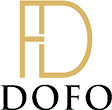What is Tyvek?
Tyvek is a brand of flashspun high-density polyethylene fibers, a synthetic material; the name is a registered trademark of DuPont. It is often seen used as housewrap, a synthetic material used to protect buildings during construction. The material is very strong; it is difficult to tear but can easily be cut with scissors or a knife. Water vapor can pass through Tyvek, but liquid water cannot. All of these properties make Tyvek useful in a variety of applications.It is applied to producing Tyvek paper backpack.
Tyvek is a nonwoven product consisting of spunbond olefin fiber. It was first discovered in 1955 by DuPont researcher Jim White who saw polyethylene fluff coming out of a pipe in a DuPont experimental lab.It was trademarked in 1965 and was first introduced for commercial purposes in April 1967.
According to DuPont's website, the fibers are 0.5–10 µm (compared to 75 µm for a human hair). The nondirectional fibers (plexifilaments) are first spun and then bonded together by heat and pressure, without binders.
Those are properties of Tyvek
Light weight
Class A flammability rating.
Chemical resistance
Dimensional stability
Opacity
Neutral pH
Tear resistance
DuPont recommends starch, dextrin, casein, and animal-based adhesives over most synthetic-based adhesives, emphasizing the effectiveness of water-based and quick-drying glues as the best for bonding Tyvek both to itself and to a variety of substrates. DuPont also claims that the following adhesives are highly effective:
Water-based synthetic lattices
Ethylene/vinyl acetate
Acrylic pressure-sensitive tape
Solvent-based single-component polyurethane
Hot glue
Heat-sealing can be used to melt Tyvek and cause it to bond to itself, but this form of bonding tends to create puckers in the otherwise flat material. Dielectric bonding can be effective in some circumstances, as is ultrasonic sealing.

Contact Person
- Tel:
+86-0592-5727369
+86-13779965111
- Email:
- admin@dofobags.com
- Address:
- Room 405B,Sanfu Wealth Build.NO.990-992,Anling Road,Xiamen
MOBILE WEB
MOBILE WEB


